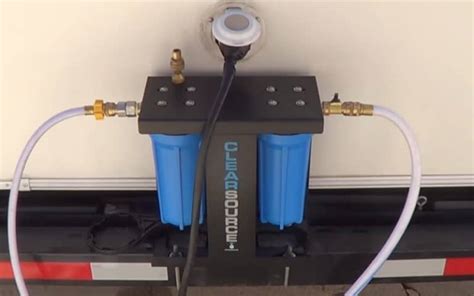How To Increase Water Pressure In Rv
Ronan Farrow
Apr 01, 2025 · 4 min read

Table of Contents
How to Increase Water Pressure in Your RV
Having low water pressure in your RV can be a real pain, especially when you're trying to enjoy a relaxing camping trip. A weak shower, struggling toilet flush, and difficulty washing dishes can quickly turn your vacation into a chore. Fortunately, there are several ways you can boost that pressure and get back to enjoying the great outdoors! This guide will walk you through the most common causes of low RV water pressure and provide practical solutions to get your water flowing smoothly.
Understanding RV Water Pressure
Before diving into solutions, it's important to understand what constitutes "low" water pressure and the typical pressure range you should expect. Most RVs operate optimally with a water pressure between 40 and 80 PSI (pounds per square inch). Anything below 40 PSI is generally considered low and will impact the performance of your fixtures. Pressures exceeding 80 PSI can damage your RV's plumbing system, so it's crucial to maintain a balance.
Common Causes of Low RV Water Pressure
Several factors can contribute to low water pressure in your RV. Let's explore the most frequent culprits:
1. Low Water Source Pressure
This is often the most common cause. If the campground's water supply has low pressure, there's little you can do to significantly increase it within your RV. Check with the campground management to see if they're experiencing any water pressure issues.
2. Clogged Water Filter
A dirty or clogged water filter restricts water flow, leading to reduced pressure. Regularly changing your RV water filter (at least every few months or sooner if you notice decreased pressure) is crucial for maintaining optimal water pressure and ensuring clean water.
3. Leaks in the Plumbing System
Leaks, even small ones, can significantly decrease water pressure. Inspect all your water lines, connections, and fixtures for any signs of leaks. Pay close attention to areas under sinks, around faucets, and near the water pump. A professional inspection might be necessary if you can't locate the source of a leak.
4. Faulty Water Pump
Your RV's water pump is responsible for boosting water pressure. If the pump is malfunctioning or weak, it won't be able to provide sufficient pressure. Listen for unusual noises during operation – a grinding sound often indicates a problem. Consider replacing the pump if it seems faulty.
5. Incorrect Water Pressure Regulator Setting
Many RVs have a water pressure regulator to protect the plumbing system from high pressure. If the regulator is set too low, it will limit the pressure entering your RV. Ensure it's set to the recommended range of 40-80 PSI.
How to Increase RV Water Pressure
Now that we've identified the potential causes, let's explore how to address them and boost your RV's water pressure:
1. Check and Replace the Water Filter
This is the easiest and most effective first step. Simply locate your water filter (usually near the water inlet), replace it with a new one, and check if the pressure improves.
2. Inspect for Leaks
Carefully examine your plumbing system for any leaks. Tighten any loose connections and repair any visible leaks as soon as possible. If a leak is difficult to find, consider seeking professional help.
3. Check the Water Pump
Listen to your water pump while it's running. If it's making unusual noises or struggling to pump water, it may need repair or replacement.
4. Adjust the Water Pressure Regulator
Make sure your regulator is set within the recommended pressure range (40-80 PSI). Consult your RV's manual for specific instructions on adjusting the regulator.
5. Consider a Water Pressure Booster Pump
For situations where campground water pressure is consistently low, a water pressure booster pump can significantly increase the pressure within your RV. These pumps install inline with your existing water system and provide an extra boost.
Maintaining Optimal RV Water Pressure
Regular maintenance is key to preventing low water pressure issues. Develop a routine that includes:
- Regularly changing your water filter: This is crucial for both water pressure and water quality.
- Periodically inspecting your plumbing system: Check for leaks and loose connections.
- Testing your water pump: Listen for unusual sounds and address any problems promptly.
- Keeping your water pressure regulator properly adjusted: Ensure it’s within the optimal range.
By following these tips, you can enjoy consistent and reliable water pressure in your RV, ensuring a more comfortable and enjoyable camping experience. Remember to always consult your RV's owner's manual for specific instructions and recommendations.
Featured Posts
Also read the following articles
| Article Title | Date |
|---|---|
| How To Know If Theres A Warrant For Your Arrest | Apr 01, 2025 |
| How To Make Portable Ac Quieter | Apr 01, 2025 |
| How To Prevent Vaping In School | Apr 01, 2025 |
| How To Hook Up Oil Pressure Gauge | Apr 01, 2025 |
| How To Paint A Synthetic Stock | Apr 01, 2025 |
Latest Posts
Thank you for visiting our website which covers about How To Increase Water Pressure In Rv . We hope the information provided has been useful to you. Feel free to contact us if you have any questions or need further assistance. See you next time and don't miss to bookmark.
